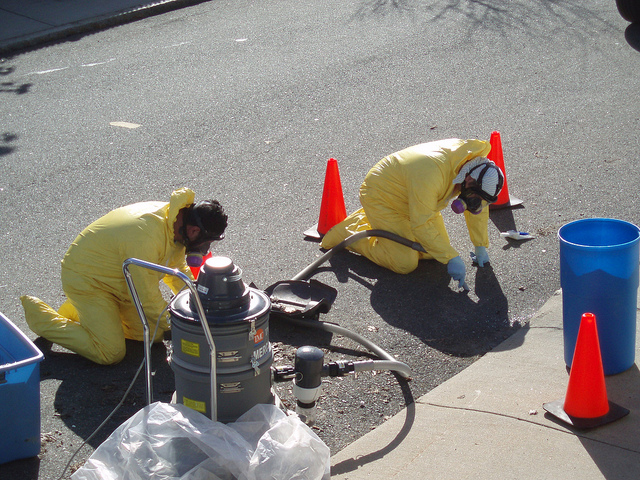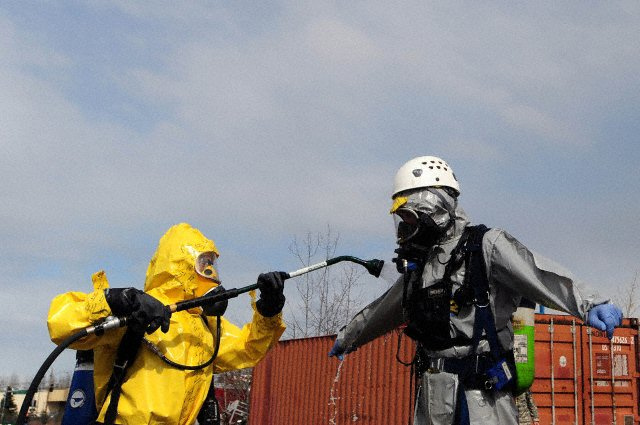In August 2013, President Obama issued an Executive Order directing federal regulatory agencies to review specified regulatory programs that are designed to prevent catastrophic releases of toxics: Occupational Safety and Health Administration (OSHA) Chemical Process Safety Management Standard (PSM); Environmental Protection Agency (EPA) Accidental Release Prevention (ARP) program and Emergency Planning and Right-to-Know Act (EPCRA) program; and Department of Homeland Security (DHS) Chemical Facility Anti-Terrorism Standards (CFATS) program (I blogged about the EO here, OSHA’s consideration of PSM changes here, and about one of the agencies’ joint reports on progress here). EPA has just issued a request for information on the possible revisions to ARP requirements, which are described below.
Audit, Compliance and Risk Blog
EPA Seeks Comments On Accidental Release Prevention Requirements
Posted by Jon Elliott on Thu, Sep 04, 2014
Tags: Corporate Governance, Business & Legal, Health & Safety, OSHA, Environmental risks, Environmental, EPA
Vehicle Maintenance: Begin Recycling Your Used Motor Oil Today
Posted by STP Editorial Team on Thu, Aug 07, 2014
Did you know that if all the oil from American do-it-yourself oil changers were recycled, it would be enough motor oil for more than 50 million cars a year? Wow! Imagine how much foreign oil that would eliminate.
Tags: Corporate Governance, Business & Legal, Training, Environmental risks, Environmental, EHS, EPA, Transportation
Supreme Court Narrows EPA Authority to Regulate CO2 Emissions
Posted by Jon Elliott on Mon, Jul 21, 2014
Since the US Supreme Court affirmed in 2007 that the Clean Air Act (CAA) provides the Environmental Protection Agency (EPA) with authority to regulate carbon dioxide (CO2) and other greenhouse gases (GHGs), EPA has pursued a growing set of regulatory initiatives. In each, EPA has attempted to fit GHGs into statutory and regulatory programs originally designed for more conventional pollutants – and the entities it targets have sued the agency claiming the stretch to GHGs exceeds EPA’s authority. Each court decision has adjusted the contours of EPA’s CAA authority, legitimizing some stretches and vacating others.
Tags: Corporate Governance, Business & Legal, Environmental risks, Environmental, EHS, EPA, Greenhouse Gas, ghg
NTSB and PHMSA Focus on Facility Response Plans for Pipelines
Posted by Allison Campbell on Mon, Jul 14, 2014
Investigation of the 2010 spill at Marshall, Michigan, the largest on-land spill in US history, underlines the reality that a Facility Response Plan (FRP) is more than a government-required document—an inadequate document or plan can lead to environmental and economic disaster. Owners and operators of onshore pipelines must review and update FRPs every five years from the date of last submission or last approval, and whenever new or different operating conditions arise that would affect the plan. (49 CFR 194.121 Response Plan Review and Update Procedures). PHMSA recently released two Advisory Bulletins reminding operators what it requires in an FRP and listing five of the most common reasons for it to reject an FRP.
Tags: Corporate Governance, Business & Legal, Health & Safety, Environmental risks, Environmental, EHS, EPA, Greenhouse Gas, ghg, Hazcom, Oil & Gas, Transportation
Chemical Facility Safety–Progress Report on the President’s Executive Order
Posted by Jon Elliott on Wed, Jul 02, 2014
Last August, President Obama issued an Executive Order (EO 13650) to agencies with responsibilities for chemical facility safety (I blogged about it here). The EO provides for a Chemical Facility Safety and Security Working Group, co-chaired by the Department of Homeland Security (DHS, which administers the Chemical Facility Anti-Terrorism Standards (CFATS) program), Environmental Protection Agency (EPA, which administers the Accidental Release Prevention (ARP) program under Clean Air Act) and Department of Labor’s Occupational Safety and Health Administration (OSHA, which administers Chemical Process Safety Management (PSM) Standard), and also including the Departments of Transportation, Justice (DOJ) and Agriculture. It directs them to work together to improve their operational coordination, and to consult with other security and environmental agencies at all levels of government, as well as the White House.
Tags: Corporate Governance, Business & Legal, Health & Safety, Training, Environmental risks, Environmental, EPA, Hazcom
On June 2, the U.S. Environmental Protection Agency (EPA) proposed a new Clean Power Plan, in which the agency will apply its authority under the Clean Air Act (CAA) to dramatically reduce greenhouse gas (GHG) emissions from fossil fuel-fired electric generating units (EGUs). EPA calculates that these power plants account for roughly one-third of all domestic GHG emissions in the US. Advocates on opposite sides of this controversial proposal claim this Plan would either become the most important US initiative to address climate change, and/or would crash economies through much of the US heartland by strangling coal-fired electricity production. Let’s hope we end up closer to the optimistic scenario!
Tags: Corporate Governance, Business & Legal, Health & Safety, Environmental risks, Environmental, EPA, Greenhouse Gas, ghg
It's nearly time to start worrying that outdoor work in the summer sun will lead to heat illness. The federal Occupational Safety and Health Administration (OSHA) provides some guidance to employers and their workers, while the Sun Belt California's Division of Occupational Safety and Health (Cal/OSHA) administers detailed regulatory requirements promulgated under state law. If you have outdoor workers in California you must comply with the following requirements, while if you're anywhere else you should at least consider them.
Tags: Corporate Governance, Business & Legal, Employer Best Practices, OSHA, Employee Rights, California Legislation, Environmental risks, Environmental, EHS, EPA
EPA and Corps of Engineers Redefining “Waters of the United States”
Posted by Jon Elliott on Wed, Apr 09, 2014
The Clean Water Act (CWA) provides federal agencies with authority to regulate a wide range of activities that may affect “waters of the United States”—sometimes called “navigable waters.” These activities include water quality planning and discharge regulation by the US Environmental Protection Agency (EPA) and delegated states, and regulation of projects that may lead to “dredge and fill” of waters, through permits issued by the US Army Corps of Engineers.
Tags: Business & Legal, Environmental risks, Environmental, EHS, EPA, Underground Storage Tanks, effluent, Stormwater
Changes to California Carcinogen and Reproductive Toxin Lists
Posted by STP Editorial Team on Wed, Mar 19, 2014
The Office of Environmental Health Hazard Assessment (OEHHA) has made a number of changes to the list of chemicals known to the State of California to cause cancer or reproductive toxicity for purposes of the Safe Drinking Water and Toxic Enforcement Act of 1986 (Proposition 65).
Tags: Health & Safety, California Legislation, Environmental risks, Environmental, EHS, EPA, Hazcom
EPA Proposes To Revise The Agricultural Worker Protection Standard
Posted by Jon Elliott on Wed, Mar 05, 2014
The US Environmental Protection Agency (EPA) administers a Worker Protection Standard (WPS) designed to protect workers exposed to agricultural pesticides. WPS is patterned after the Occupational Safety and Health Administration (OSHA's) Hazard Communication Standard (HCS) for workers in most industrial and commercial settings. EPA adopted the WPS in 1992, and just proposed its first revisions on February 20, 2014. Some of these changes incorporate revisions to HCS adopted by OSHA in 2012 (see my earlier blog), while others catch up on two decades of industrial hygiene and worker safety practices. Comments will be due 90 days after the proposal is published, with final approval to follow sometime later.
Tags: Business & Legal, Employer Best Practices, Health & Safety, OSHA, Employee Rights, Environmental risks, Environmental, EPA, Hazcom










